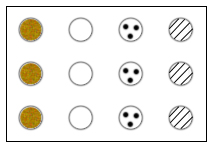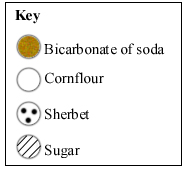Identify the mystery substances
This task is about testing with different solutions to identify four solid substances.
|
Part A Set up a spotting tile with a small amount of each solid as indicated by the key. |
|
|
Row A
Row B
Row C
|
  |
| Add 3 drops of the following solutions to the solids in each row and then write down the changes you see. | |||||||||||||||||||||
|
i) ii) iii) |
To row A add dilute hydrochloric acid.
To row B add iodine solution. To row C add universal indicator solution. |
||||||||||||||||||||
| a) | Record your observations in the table below. | ||||||||||||||||||||
|
|||||||||||||||||||||
|
Part B
|
|||||||||||||||||||||
| a) | Record your observations in the table below. | ||||||||||||||||||||
|
|||||||||||||||||||||
|
b) |
On the basis of your tests, identify the solids in the substances W, X, Y, and Z. |
||||||||||||||||||||
|
|
Substance W: ______________________________
Substance X: ______________________________
Substance Y: ______________________________
Substance Z: ______________________________
|
||||||||||||||||||||

